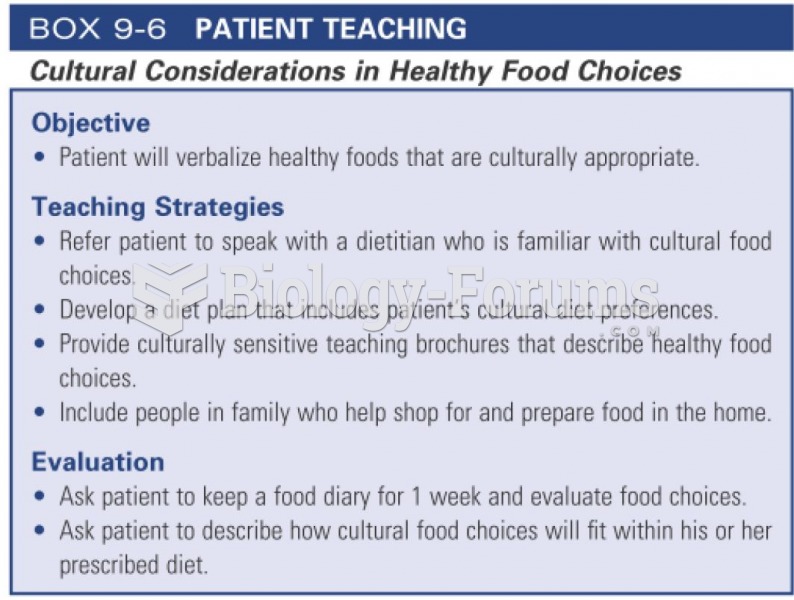|
|
|
Certain topical medications such as clotrimazole and betamethasone are not approved for use in children younger than 12 years of age. They must be used very cautiously, as directed by a doctor, to treat any child. Children have a much greater response to topical steroid medications.
The first oncogene was discovered in 1970 and was termed SRC (pronounced "SARK").
Cancer has been around as long as humankind, but only in the second half of the twentieth century did the number of cancer cases explode.
Many supplement containers do not even contain what their labels say. There are many documented reports of products containing much less, or more, that what is listed on their labels. They may also contain undisclosed prescription drugs and even contaminants.
Green tea is able to stop the scent of garlic or onion from causing bad breath.







